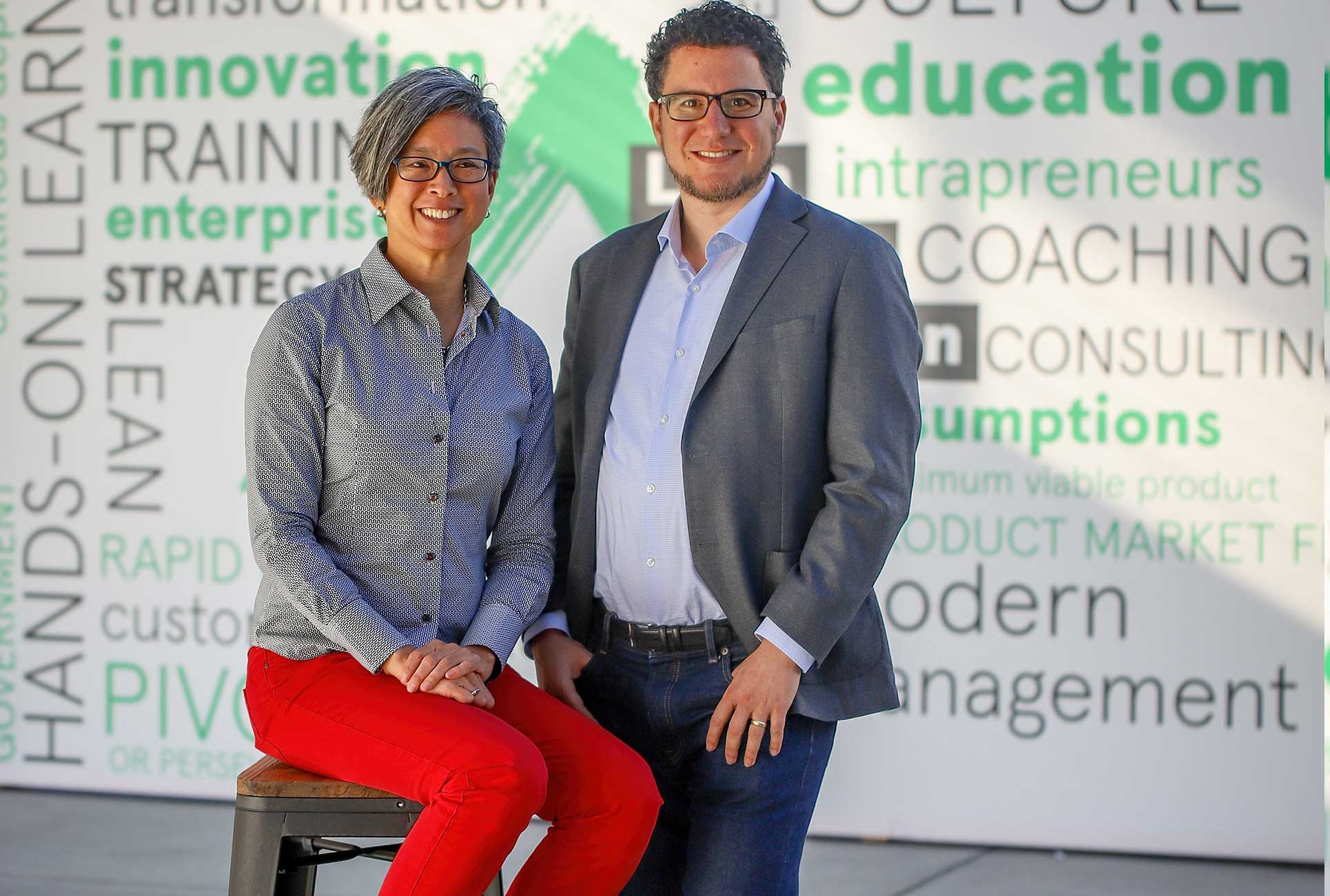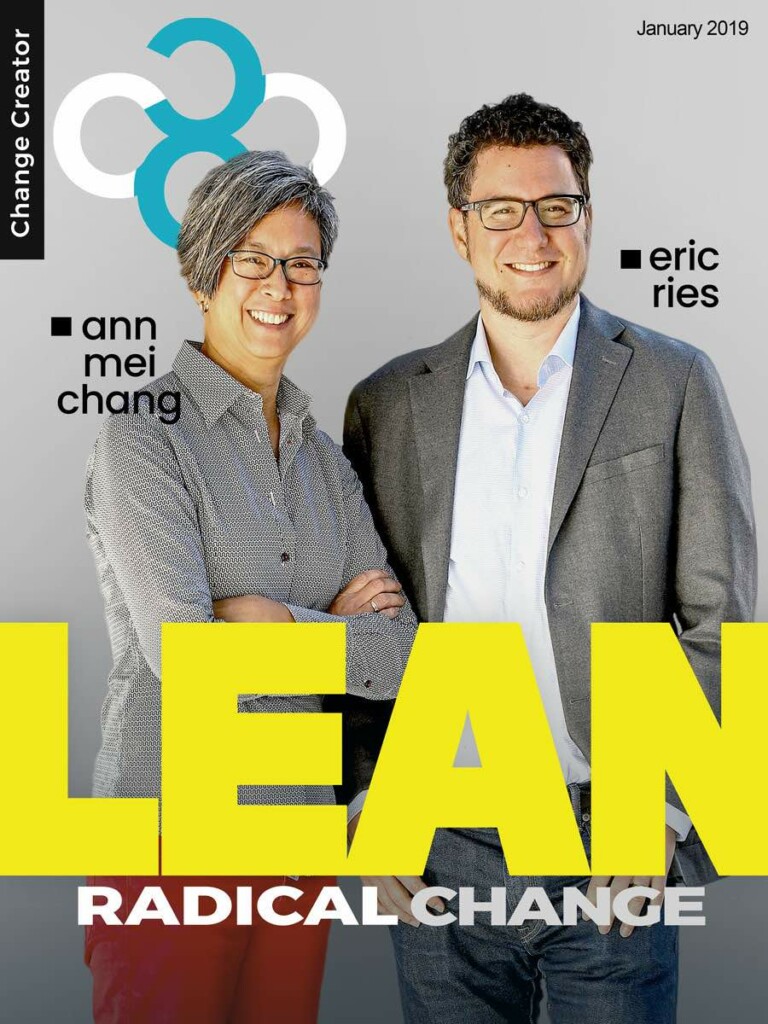
Listen to our full interview with Ann Mei Change and Eric Ries here
The road to profits is littered with good objectives. All you need to do to launch a firecracker startup is talk to a focus group and run a few field trials. Business management is easy. Udemy and Inc.com will teach you how in five amazing steps you won’t believe are true…
… until that first fatal setback that shows you why 75% of start-ups fail: there are no maps for unexplored landscapes or demographic data for invented needs. You can read industry forecasts all year and still not hit on a single piece of actionable information for walking on unknown terrain.
That’s why Eric Ries’ Wikipedia page begins with failure.
A Yale education and an intellect sharp enough to cut diamonds with couldn’t save him. Conventional best practices simply didn’t work.
When failure comes to ordinary entrepreneurs, they blame their business plan. They blame their sales teams. They blame everything they can find in their dated textbooks, but Eric Ries decided to develop a new way of thinking instead. That new way is The Lean Startup and millions of white-collar acolytes are filling up convention centers, business pages, and forums to learn more about it. The lean approach is no longer a simple philosophy, but a movement that’s crowded onto every continent in the world.

Uncertainty in an Unpredictable World
Eric Ries is the reason concepts like minimum viable products, pivots, and feedback loops are so pronounced in today’s thinking. His tools help for-profit startups to develop products in high-uncertainty environments by pushing production further down the innovation cycle and drawing learning forward.
Think of the lean approach as the tour guide to your customers’ interests. Instead of giving you a half-considered map and sending you on your way, it stays by your side, helping you adjust to your terrain with every step. It’s transformed for-profit thinking, and now it’s moving into the social impact space, largely thanks to Ann Mei Chang and her book, Lean Impact. Even the private world’s uncertainty cannot compete with that of the social sector, so Chang believes it should stop executing plans as if it knows the answers.
A Dirty Word Called “Funding”
How do you save an endangered species?
We might have a hundred solutions, but the last northern white rhino and shrinking rainforests indicate that they aren’t working. How do you stall global warming?
The 2030 UN deadline for effective change tells us we still don’t have a bold enough plan to save the pale blue dot. How do you close the wealth gap, cure poverty, and mobilize a nation? Every one of these issues has several defined strategies, but few can account for the system that prevents social entrepreneurs from implementing them. Ann wanted to change that, so she spoke to change creators who had already beaten their way through the underbrush.
“The most common [challenge] that came up is the nature of funding. You have to come up with a detailed plan in advance and often plan down to the penny exactly. Some of the saddest stories I’ve heard are of organizations who have come up with these plans, been awarded grants [and then] discovered that what they were doing didn’t work and then kept doing it anyway because they had a contract to do.” The social sector is jerry-rigged to force change creators to map out in five and 10-year milestones with absolute certainty. It’s an impossible ask and, to muddy the pathways even more, demand and impact are intertwined.
Lean impact has cleared the trail. It might not be able to create your map, but it provides the cartography lessons you need to sketch it yourself.
Finding Certainty in High-Risk Biomes
In the business world, demand is easy to understand: you build a product. Your customers either buy it or ignore it. Feedback happens all on its own, but the social impact space doesn’t come with such a measurable response. To stretch the feedback loop even further, change creation comes with its own inbuilt well of compliments. “We’re dedicating our money and our lives to trying to do something to help others,” Ann says, “and somehow that stymies people into asking, ‘Could you do better?’”
While writing Lean Impact, Chang uncovered the story of Summit Public Schools, an emblem of how nonprofits can put the lean approach to work. Founder, Dianne Tavenner, wanted to have 100% of her students graduate, so she launched a few schools and watched her first students graduate with better results than those of their peers. Summit Schools were encouraged to scale prematurely, but Tavenner wanted to push her organization into a shortened feedback loop. “They figured out a way to gather more subjective data through focus groups and teacher evaluations, and then experiment by running variations of their classrooms over a year-long period and look at the results on a week-by-week basis.” In so doing, Summit turned its cause into a minimum viable product. Every tiny change was measured, all the way down to its classroom layouts.
In 2017, 99% of its graduating class was accepted into college, and 300 U.S. schools are replicating their model.
Chang sees that iterative approach as a way to escape the funding/contract mill. “If you’re trying to reduce the incidence of malaria in a region by distributing mosquito nets, it may take years to measure whether the incidence of malaria has gone down, but tomorrow you can test whether people are actually hanging up those nets and sleeping under them, and if they’re not, you can figure out quickly it’s not likely to work.”
The traditional Theory of Change defines a goal, maps its fulfilment, and then looks back to uncover the preconditions required to affect that change. The concept has worked its way into common lexicon, but Ann Mei has found that nonprofits are developing elaborate theories for the sake of obtaining funding, then abandoning their research on a dusty shelf. “Test those early linkages. If you think if you teach kids this way, they’ll learn better, test whether they’ve retained the information better using whatever indicators you can find, and optimize for that.”
Entrepreneurship will swallow you in for-profit thinking before you have a chance to measure your real impact, so shortened feedback loops are not options, but necessities. “We want to identify our riskiest assumptions–the hypotheses that we need to test early on that may cause our solution to fail.
Eric Ries is a passionate advocate of the scientific method for this precise reason. “In engineering-driven organizations, in science-driven organizations, even a lot of finance-driven organizations, the idea of rigorous analysis of day-to-day decision-making is considered essential, and yet that doesn’t get integrated into boardroom conversations. I think in the future people are going to look back on our era and find that really strange.”
Empathy in the For-Profit Impact Space
Social entrepreneurs must serve two audiences to the private sector’s single credit-card-wielding buyer: the consumer and the cause. The latter cannot be left to fail for long enough to gather quantitative feedback.
“Measuring impact is much more difficult than measuring clicks on an e-commerce site,” Chang says, but perhaps the most resounding reason she supports the lean approach is the need for empathy in a socially-driven industry. “When you’re experimenting in situations where you’re working with vulnerable populations, it has to be more thoughtful,” she says. “If you’re seeking social impact, it’s not enough to have people want what you have. You also need to deliver a social benefit.”
Thankfully, a social benefit can be measured qualitatively long before numbers can be crunched.
Drowning in Data
The private sector has begun to emphasize the importance of small data in a big-data-obsessed world — those actionable data footprints consumers leave behind as they navigate your brand. Without small data, businesses would drown in their own numbers–and they often do. Eric Ries expands on that thought process through vanity metrics, his term for the analytics businesses use to lionize unproven success and intimidate their rivals.
“I was once up against a competitor who liked to report the total GDP equivalent of all the user-to-user virtual transactions in their system,” he says. Those metrics are easy to celebrate…all the way to failure. “There’s no way to ever pivot because people will constantly say, ‘We’re almost on the right track. The numbers will turn around any minute,’ and by the time you finally realize that things are a disaster, it’s too late to change.”
Ann says the social sector has taken vanity metrics to an entirely new level. “Almost all [nonprofits] tout the number of people they’ve touched in some way. These numbers are completely meaningless. They largely mean that someone was good at fund-raising; that they wrote a good grant, someone gave them a bunch of money and so they did stuff for a bunch of people. It doesn’t actually say whether they made those people’s lives better.”
Big data disfigures the real and critical things that are getting in the way of your success. You’ll never discover why those youth you found employment for lost their jobs months later. You’ll never notice that one demographic who are not being served as well as the rest. You’ll look at the beautiful sunset from 93 million miles away and never notice that the sun is dying. “When you pay attention to the real data behind the metrics that matter,” says Ann, “you’ll make different decisions about how you deliver your intervention. ‘
Redefining Risk
Beyond Chang’s study of Summit, her research led her right back to a company belonging to Ries himself: The Long Term Stock Exchange (LTSE). The startup is hoping to overhaul the stock exchange to relieve public companies of the pressures involved in high-frequency trading. The concept is almost too wild to imagine, and yet it’s attracted the encouragement of giants like Tim O’Reilly, Aneesha Chopra, and Marc Andreessen. It is, Ries says, “making it possible to run organizations in a more sustainable, innovative, long-term ethical way.”
“I think that a high percentage of the work that needs to be done in the economy today needs to be done by startup-type teams,” he explains. Startups are nimble. They’re innovative. They can become financially self-sustaining, and few brands characterize those traits as well as LTSE.
There’s a reason Eric has become part of such a seemingly-risky side of entrepreneurial culture: he believes startups have the courage to tackle the world’s problems more aggressively by taking the very risks that reduce risk. “[Risk avoidance is] not actually a low-risk way to go. Corporations get disrupted precisely because they were unwilling to do anything they perceived as risky but that their competitor did not. I think we have to redefine what risk means.“
The problem is often less one of bureaucracy than of simple unwillingness and red tape, and while those tendencies are fizzling away in the sunlight, Chang believes the social impact space’s lack of profit focus is slowing it down. “People are wed to their existing solutions because of pride of ownership, brand identity, or risk aversion, and so the best ideas often don’t get picked up.
Social entrepreneurship is poised to take over the for-profit world, and Ries and Chang are riding the cusp of the wave, using lean startups as their sails. They’ve already changed the global conversation, but if you listen carefully enough, you will change the world.
Listen to our full interview with Ann Mei Change and Eric Ries here
Key Takeaways
- Create short feedback loops. Measure your impact on a weekly basis, even if it’s too early to test it quantitatively.
- Find the driver that will let you scale and accelerate growth.
- Identify those assumptions that could make your solution fail: those related to growth, value, and social benefit.
- Don’t drop your knowledge and research once you’ve secured funding. Keep measuring your growth rigorously, never allowing your good intentions get in the way of your ambition for your cause.
- If your initial plan doesn’t work, pivot to a new approach that’s more likely to carry you towards your vision.
- Vary and study your approach so that your minimum viable product can grow out of smaller milestones. Test your theory of change.
- Use the strengths of a startup business model to innovate more aggressively.
- Take the risks that reduce your risk.
- Don’t be tempted to use vanity metrics. Identify relevant metrics that are capable of picking up the nuances in your cause and its effects.
You might also enjoy:






